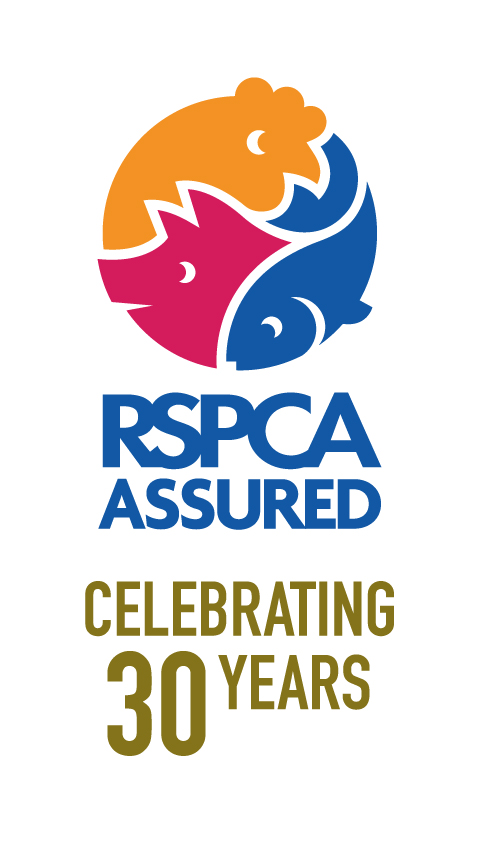Meat Chickens or Broilers
The True Cost of Cheap Chicken
Every year, over one billion chickens are slaughtered for meat in the UK. Over 90% of these chickens are bred to grow too quickly and reared in bare, dimly lit and overcrowded conditions. They have little room to move around freely and perform natural behaviours like perching and preening.
Some Key Animal Welfare Concerns
When we’re out shopping we’re bombarded with offers on cheap chicken that seem too good to be true… and that’s because they are. Cheap chicken comes at the cost of the great suffering of the millions of animals reared to produce it.


1. Fast growth
The majority of chickens are bred to grow very quickly, putting a lot of pressure on their young skeleton, muscles and organs. This can cause a lot of pain and suffering as a result of leg health issues, leading to reduced mobility, and other problems such as organ failures and even death.
What the RSPCA Standards say…
RSPCA standards only allow naturally slower-growing higher welfare breeds that have a much lower risk of developing these conditions.
2. Living Conditions
Many chickens live in artificially lit, bare and overcrowded conditions. These chickens lack the space, daylight and stimulation to allow them to move around freely, stay active and carry out natural behaviours. This can cause frustration and boredom, as well as negative effects on their bodies due to the inability to exercise properly. This and the constant drive to eat to satisfy the genetically fast rate of growth encourage weight gain that adds to the other health problems already linked to fast growth rates.
What the RSPCA Standards Say…
RSPCA standards provide chickens with more space than they get under the law or some other standards. Additionally, they insist on chickens being provided with enrichment, such as perches, hay bales and objects to peck at to provide stimulation and encourage activity. The standards also require that indoor chickens have windows for natural daylight. Additionally, free-range chickens are provided with shade and shelter on the range, including trees and bushes, which protect them from bad weather and reduce their built-in fear of predators. This makes them feel safer and encourages more of them to leave their housing and use and benefit from the range.
3. Slaughter
Up to 30% of meat chickens in the UK are still shackled upside down by the legs whilst still alive prior to being electrically stunned unconscious before slaughter, which can be distressing and cause injury. Also, around 10 per cent of the birds are not pre-stunned at all and are still conscious when they are killed.
What the RSPCA Standards Say…
The RSPCA’s standards do not allow chickens to be shackled as routine whilst they are still alive or to be slaughtered without being effectively stunned to ensure they are unconscious.
Farm Fact - contrary to popular belief, Halal slaughter doesn’t necessarily mean that animals have not been pre-stunned. Around 60 per cent of certified Halal meat is from animals stunned before slaughter.
Other Welfare Concerns
Thinning
To meet legal stocking density and other commercial requirements as well as retail demand for different sized chickens, some birds are removed for slaughter before others. This practice, which involves teams of catchers entering and moving through the shed, can be a very stressful experience for the birds and in some cases even result in death. The RSPCA standards do not allow the routine practice of thinning.
Catching
Chickens may be caught by a single leg with several birds being carried in one hand. This often causes injuries, such as broken legs and wings, which can be very painful and distressing for the chickens. In addition to requiring that staff are trained in animal handling, the RSPCA’s standards also insist that birds are caught by both legs and no more than three birds may be held in each hand, or that birds are lifted individually with both hands around the body and wings.
Burns and Lesions
Inactivity caused by overcrowding, lack of daylight, bare environments and health problems linked to fast growth rates contribute to ammonia burns (called hock burns) and lesions that cause discomfort. These are caused when inactive birds spend a long time sitting in poorly managed floor litter that is damp due to bird waste. The RSPCA’s standards require that only naturally higher welfare, slower-growing and more active breeds are used along with more space and an interesting environment that encourages birds to move around and be active, all of which helps to reduce the risk of hock burns and similar problems.
Long Journeys
Many chickens experience long transport times without food and water which can contribute to the risk of injury or health problems, such as heat exhaustion. This can even lead to an increased chance of the birds dying before they reach the abattoir. The RSPCA’s standards set a maximum travel time of four hours (the maximum time in the transport crates is eight hours).
You Get What You Pay For
It’s not just the chickens that suffer. Whilst cheap chicken might seem like a bargain these various welfare issues also mean poorer quality.
Fast growth rates have been found to contribute to conditions known as ‘wooden breast’ and ‘white stripping’ which are essentially muscle tissue disorders that negatively affect meat quality. The stress caused by practices like thinning may be linked with increased amounts of the bacteria Campylobacter.
So, do you still think cheap chicken sounds like an appetising deal?
Find RSPCA Assured Chicken at Your Favourite Supermarket
RSPCA Assured Chicken Welfare
You can find out more about the higher welfare standards of chicken on RSPCA Assured farms.
RSPCA Assured Chicken Welfare The Real Cost of Cheap Chicken
